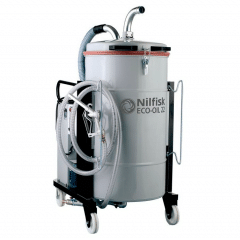
DEPURECO vacuum cleaner
A hazardous dust vacuum cleaner is an essential tool for ensuring the health of professionals in certain trades, such as construction. These workers use extremely polluting machines that produce a lot of dust (wood, stone, plaster). To prevent occupational illness, it is the company’s responsibility to take steps to ensure that this dust is reduced to a sufficiently low level so that it is no longer a health hazard. This is why we recommend hazardous dust vacuum cleaners. Hazardous dusts are classified according to their level of danger, determined by the Occupational Exposure Limits (OEL). There are three categories under standard EN 60335-2-69:
- Class L: Dust with moderate risk (OEL> 1 mg/m³). Example: plaster, household dust
- Class M: Dust with medium risk (OEL> 0.1 mg/m³). Example: dust from wood or metal
- Class H: Dust with high risk (OEL< 0.1 mg/m³). Example: asbestos
Therefore, we recommend you determine the Occupational Exposure Limits for the hazardous dust that poses a health hazard for your company’s employees and choose a suitable class of vacuum cleaner.








